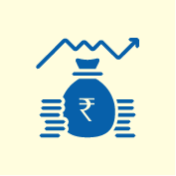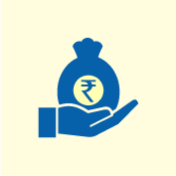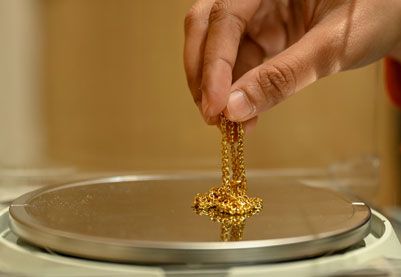Diwali Gold Rate Predictions and Trends
Gold buying trends on Dhanteras and Diwali
Gold has always been an integral part of Diwali celebrations, symbolising wealth, prosperity, and auspicious beginnings. On Dhanteras, the first day of the festival, families consider it lucky to purchase gold jewellery or coins. This tradition drives a surge in demand, often leading to higher prices around the festive season. Many people also reflect on the last year Diwali gold rate to compare how prices have shifted, helping them plan purchases or investments. Since gold is both a cultural and financial asset, its value during Diwali becomes more than just market-driven—it represents trust, tradition, and long-term prosperity for households.
Forecasting gold rates for Diwali 2025
The gold rate forecast for Diwali 2025 is shaped by both global and domestic triggers. Every year, demand for gold spikes in India during this festive season, as buying gold is seen as auspicious. Factors such as inflation trends, central bank interest rate moves, and ongoing geopolitical shifts are expected to influence gold prices this year. Currency movements, particularly the rupee-dollar exchange rate, will also play a key role in shaping rates. With inflationary pressures and global uncertainties continuing in 2025, experts believe gold may see an upward trend. Still, short-term corrections are possible, giving buyers opportunities for strategic purchases.
Last Diwali gold rate vs. this year analysis
In 2025, gold prices around Diwali are showing sharper fluctuations compared to last year. While Diwali 2024 witnessed a steady and gradual rise in rates driven by festive demand and inflation, this year the market is far more volatile. Global triggers, including uncertain interest rate policies and continuing geopolitical tensions, have made gold prices swing more sharply. Domestically, the rupee’s performance against the US dollar has also influenced trends, adding another layer of unpredictability. Unlike last year’s calmer climb, 2025 is marked by sudden spikes and corrections. As Diwali 2025 approaches, buyers and investors are closely tracking how prices may finally stabilise.
How gold rates are predicted for Diwali?
Gold rate predictions for Diwali are based on various economic indicators and market trends. Analysts monitor global factors such as inflation rates, central bank policies, and geopolitical tensions. Domestically, the demand for gold during the festive season plays a crucial role. Market experts also consider the rupee's performance against the dollar, as a weak rupee can push gold prices higher in India. Additionally, past trends in gold rates during previous Diwalis serve as a benchmark for future predictions. The overall economic health of the country, including factors like GDP growth, consumer spending, and inflation, are taken into account. Analysts rely on data from the gold futures market and the overall sentiment among traders to make informed predictions about the likely price movements during Diwali.
Factors influencing gold prices during Diwali 2025
The gold price around Diwali 2025 is expected to be shaped by both global and domestic factors. While festive demand always plays a major role, several other triggers can push rates up or down.
Key factors include:
- Global inflation: Rising inflation usually boosts demand for gold as a safe-haven investment.
- Interest rate policies: Higher rates reduce gold’s appeal, while lower rates make it attractive.
- Rupee-dollar exchange rate: A weaker rupee makes gold costlier in India.
- Festive demand: Buying gold is seen as auspicious during Diwali, naturally driving demand upward.
- Geopolitical tensions: Uncertainty often leads to a surge in gold prices.
- Supply chain factors: Mining disruptions or limited supply can also push prices higher.
Understanding the fluctuations in gold prices during Diwali
Gold prices tend to fluctuate significantly during Diwali, driven by a mix of global and local factors. The festive season sees a surge in demand, as many people purchase gold jewellery and coins, increasing the price. At the same time, gold rates are influenced by international market trends, including currency fluctuations, particularly the rupee’s performance against the dollar. A weakening rupee can cause gold prices to rise in India. Additionally, geopolitical events, inflation, and interest rates globally impact investor sentiment, further affecting prices. During Diwali, many buyers try to time their purchases, which can lead to minor corrections or spikes in the gold market. Understanding these factors can help buyers anticipate price movements and make informed decisions about their gold purchases.
Gold price trends: How last year's Diwali compares to this year?
The gold trend during Diwali continues to attract buyers and investors, but the comparison between 2024 and 2025 highlights noticeable shifts. While 2024 witnessed a gradual rise in prices, this year has been marked by sharper fluctuations. Factors such as interest rate changes, geopolitical tensions, and the rupee-dollar exchange rate have made 2025 more volatile. Despite this, festive demand keeps the overall momentum positive, with buyers timing their purchases carefully to make the most of market dips.
| Aspect | Diwali 2024 | Diwali 2025 |
|---|---|---|
| Price pattern | Steady, gradual rise | Volatile with sharp spikes |
| Global influence | Inflation-driven demand | Interest rate shifts & geopolitical tensions |
| Rupee factor | Moderate impact | Stronger effect on price swings |
| Investor sentiment | Confident buyers | Cautious, timing purchases carefully |
How to plan your gold purchases based on Diwali 2025 price predictions?
- Monitor global trends such as inflation and central bank policies to anticipate price changes.
- Keep track of the rupee’s performance against the dollar, as a weaker rupee may push prices up.
- Purchase during dips in the market, which may occur just before the festive rush.
- Stay updated on geopolitical developments that may influence gold as a safe-haven asset.
- If considering a significant investment, consult a financial expert for better market insights.
- Factor in the festive demand spike when planning your purchase closer to Diwali.
- Avoid panic buying by setting a budget based on predicted prices and stick to it.
- Look for jewellers offering festive discounts or schemes during the Diwali season.
Key indicators for gold price predictions till Diwali 2025
- Inflation rates: Rising inflation globally will likely drive up gold prices as investors seek safer assets.
- Interest rates: Watch for central bank decisions, as higher rates could slow down the rise in gold prices.
- Geopolitical tensions: Escalating conflicts or tensions can push gold prices upward due to increased demand for safe-haven investments.
- Rupee-dollar exchange rate: A weakening rupee may lead to higher gold prices in India.
- Festive demand: Diwali’s cultural significance leads to increased demand, typically pushing prices higher.
- Gold supply: Any disruptions in gold supply chains, including mining outputs, can impact prices.
- Stock market performance: A volatile stock market often encourages investors to turn to gold, influencing prices.
- Global economic outlook: A slowing global economy can make gold more attractive as a store of value.
How accurate were last year’s gold rate predictions for Diwali?
Last year’s gold rate predictions for Diwali were relatively accurate, with most analysts forecasting a steady increase in prices due to global inflation and increased festive demand. Gold rates indeed rose closer to Diwali, as predicted, largely driven by these factors. However, certain predictions underestimated the impact of the rupee’s depreciation against the dollar, which further escalated prices in India. While the forecast correctly anticipated rising demand during the festive season, the magnitude of the price rise surprised some market watchers. Overall, predictions were aligned with market conditions, but unforeseen events such as geopolitical tensions and currency fluctuations added complexity. This year, many analysts are taking a more cautious approach, factoring in both predictable trends and potential surprises.
Impact of festivals on gold demand and pricing
Festivals in India, particularly Diwali and Akshaya Tritiya, have a significant impact on gold demand and pricing. Culturally linked to prosperity and good fortune, gold purchases increase during these times as people buy jewellery, coins, and bars. This heightened demand often leads to a rise in prices, as jewellers and dealers stock up in anticipation of high sales. In addition, weddings around the festival season contribute to the demand surge, pushing prices even higher. The festive season also sees strong interest from investors, who view gold as a safe asset amidst market fluctuations. As a result, gold prices tend to spike temporarily during these festivals. This pattern reflects not only cultural preferences but also the economic importance of gold, as it serves both as an investment and a cherished symbol during celebrations.
Last year’s Diwali gold rate and its impact on gold loan rates
Last Diwali, the rise in gold rates had a direct impact on gold loan rates, as higher gold prices typically lead to increased loan amounts. Many consumers took advantage of the elevated prices to secure higher-value loans against their gold holdings. The surge in gold rates also prompted lenders to adjust their interest rates to manage the increased demand for gold loans during this festive season. For borrowers, the higher gold value meant they could obtain more substantial loan amounts without needing additional collateral. However, the higher gold prices also meant that repayment amounts could increase if the gold market corrected post-Diwali. As a result, borrowers needed to carefully manage their finances to avoid potential repayment challenges, making it crucial to understand the link between gold prices and loan rates.
Gold price trends and gold loan interest rates during Diwali
During Diwali, the gold price trends and gold loan interest rates are closely interconnected. As gold prices typically rise during the festive season due to increased demand, many individuals seek gold loans to capitalise on the high value of their jewellery or gold assets. Lenders often adjust interest rates based on market conditions and the rising gold prices, making it a favourable time for consumers looking to maximise their loan amounts. However, fluctuating gold prices also mean that borrowers need to be cautious, as any post-Diwali price correction could affect the value of their collateral. Additionally, the rising demand for gold loans during the festive season could influence lenders to introduce more competitive interest rates and loan schemes, making Diwali an attractive time for securing a gold loan.
Understanding the link between Diwali gold prices and gold loan interest rates
The gold loan interest rate is often influenced by fluctuations in gold prices, particularly during Diwali. As gold prices rise during the festive season due to increased demand, the value of gold assets used as collateral for loans also increases. This allows lenders to offer higher loan amounts based on the elevated gold prices. However, the interest rates on these loans may vary depending on market conditions. When gold prices are high, lenders may offer competitive interest rates to attract borrowers looking to capitalise on the value of their gold. Conversely, any significant drop in gold prices post-Diwali could affect both the loan-to-value ratio and the interest rate, making it essential for borrowers to stay informed about market trends before securing a gold loan.
Historical gold rates for Diwali
Historical gold rates for Diwali
Diwali has always been a time when gold demand rises significantly, with prices usually moving upward due to its cultural and festive importance. Over the years, the trend during Diwali has been shaped by inflation, global cues, and currency shifts. Typically, Diwali is seen as the peak season for buying gold, which often results in short-term price surges. Below is a simplified view of how gold rates have behaved during the festival over the last few years, including the latest trend for 2024 and expectations for 2025:
| Year | Gold rate trend during Diwali |
|---|---|
| 2019 | Moderate increase |
| 2020 | Noticeable rise |
| 2021 | Slight dip from previous year |
| 2022 | Gradual upward movement |
| 2023 | Strong festive surge |
| 2024 | Significant festive high |
| 2025 | Expected to remain high with volatility |
Gold rate prediction for future Diwali rates
With Diwali being a prime season for gold purchases, prices often peak due to heightened demand. Given that gold prices nearly touched ₹80,000 in 2024, future Diwali rates are expected to follow an upward trend, influenced by factors like inflation, global economic stability, and currency values. These predicted rates are based on anticipated demand and economic indicators, providing a glimpse into potential Diwali pricing for the next five years:
| Year | Predicted Gold Rate per 10 grams (INR) |
| 2024 | ₹78,000 - ₹80,000 |
| 2025 | ₹82,000 - ₹85,000 |
| 2026 | ₹87,000 - ₹90,000 |
| 2027 | ₹92,000 - ₹95,000 |
| 2028 | ₹97,000 - ₹100,000 |
Planning your Diwali gold purchase with a gold loan
Planning your gold purchase during Diwali can be more manageable with a gold loan. As gold prices tend to rise during the festive season, taking a gold loan allows you to leverage the high value of your gold assets to make new purchases without depleting your savings. Many financial institutions offer competitive interest rates on gold loans during Diwali, making it an opportune time to secure financing. With a gold loan, you can benefit from flexible repayment terms and access to funds quickly, allowing you to buy gold at the right time without worrying about price fluctuations. However, it's essential to compare loan offers and understand the terms before proceeding. This strategy can help you plan your gold purchases efficiently and take advantage of Diwali’s festive offers.
Related Articles
Disclaimer
Bajaj Finance Limited has the sole and absolute discretion, without assigning any reason to accept or reject any application. Terms and conditions apply*.
For customer support, call Personal Loan IVR: 7757 000 000









 Personal Loan
Personal Loan Check Eligibility
Check Eligibility Salaried Personal Loan
Salaried Personal Loan EMI Calculator
EMI Calculator Account Aggregator
Account Aggregator Credit Pulse Report
Credit Pulse Report
 Deals starting @99
Deals starting @99 Min. 50% off
Min. 50% off
 Bajaj Pay
Bajaj Pay Wallet to Bank
Wallet to Bank
 Easy EMI Loan
Easy EMI Loan Savings Offer
Savings Offer Smartphones
Smartphones Led TVs
Led TVs Washing Machines
Washing Machines Laptops
Laptops Refrigerators
Refrigerators Air Conditioner
Air Conditioner Air Coolers
Air Coolers
 Loan Against Shares
Loan Against Shares Loan Against Mutual Funds
Loan Against Mutual Funds Loan Against Insurance Policy
Loan Against Insurance Policy ESOP Financing
ESOP Financing Easy EMI Loan
Easy EMI Loan Two-wheeler Loan
Two-wheeler Loan Loan for Lawyer
Loan for Lawyer Industrial Equipment Finance
Industrial Equipment Finance Industrial Equipment Balance Transfer
Industrial Equipment Balance Transfer Industrial Equipment Refinance
Industrial Equipment Refinance Personal Loan Branch Locator
Personal Loan Branch Locator Used Tractor Loan
Used Tractor Loan Loan Against Tractor
Loan Against Tractor Tractor Loan Balance Transfer
Tractor Loan Balance Transfer Flexi
Flexi View All
View All
 Two-wheeler Loan
Two-wheeler Loan Bike
Bike Scooter
Scooter Electric Vehicle
Electric Vehicle Best Sellers
Best Sellers Popular Brands
Popular Brands

 Trading Account
Trading Account Open Demat Account
Open Demat Account Margin Trading Financing
Margin Trading Financing Share Market
Share Market Invest in IPO
Invest in IPO All stocks
All stocks Top gainers
Top gainers Top losers
Top losers 52 week high
52 week high 52 week low
52 week low Loan against shares
Loan against shares
 Home Loan
Home Loan Transfer your existing Home loan
Transfer your existing Home loan Loan against Property
Loan against Property Home Loan for Salaried
Home Loan for Salaried Home loan for self employed
Home loan for self employed Loan Against Property Balance Transfer
Loan Against Property Balance Transfer Home Loan EMI Calculator
Home Loan EMI Calculator Home Loan eligibility calculator
Home Loan eligibility calculator Home Loan balance transfer
Home Loan balance transfer View All
View All
 Term Life Insurance
Term Life Insurance ULIP Plan
ULIP Plan Savings Plan
Savings Plan Family Insurance
Family Insurance Senior Citizen Health Insurance
Senior Citizen Health Insurance Critical Illness Insurance
Critical Illness Insurance Child Health Insurance
Child Health Insurance Pregnancy and Maternity Health Insurance
Pregnancy and Maternity Health Insurance Individual Health Insurance
Individual Health Insurance Low Income Health Insurance
Low Income Health Insurance Student Health Insurance
Student Health Insurance Group Health Insurance
Group Health Insurance Retirement Plans
Retirement Plans Child Plans
Child Plans Investment Plans
Investment Plans
 Business Loan
Business Loan Secured Business Loan
Secured Business Loan Loan against property
Loan against property Loans against property balance transfer
Loans against property balance transfer Loan against shares
Loan against shares Home Loan
Home Loan Loans against mutual funds
Loans against mutual funds Loan against bonds
Loan against bonds Loan against insurance policy
Loan against insurance policy
 Apply for Gold Loan
Apply for Gold Loan Transfer your Gold Loan with Us
Transfer your Gold Loan with Us Gold Loan Branch Locator
Gold Loan Branch Locator
 ULIP Plan
ULIP Plan Savings Plan
Savings Plan Retirement Plans
Retirement Plans Child Plans
Child Plans Free Demat Account
Free Demat Account Invest in Stocks
Invest in Stocks Invest in IPO
Invest in IPO Margin Trading Facility
Margin Trading Facility Fixed Deposit Branch Locator
Fixed Deposit Branch Locator
 Check your Credit Score
Check your Credit Score
 New Car Loan
New Car Loan Used Car Loan
Used Car Loan Loan Against Car
Loan Against Car Car Loan Balance Transfer and Top-up
Car Loan Balance Transfer and Top-up My Garage
My Garage
 Get Bajaj Prime
Get Bajaj Prime
 Mobiles on EMI
Mobiles on EMI Electronics on EMI Offer
Electronics on EMI Offer  Iphone on EMI
Iphone on EMI LED TV on EMI
LED TV on EMI Refrigerator on EMI
Refrigerator on EMI Laptop on EMI
Laptop on EMI Kitchen appliances on EMI
Kitchen appliances on EMI Washing machines
Washing machines
 Personal Loan EMI Calculator
Personal Loan EMI Calculator Personal Loan Eligibility Calculator
Personal Loan Eligibility Calculator Home Loan EMI Calculator
Home Loan EMI Calculator Home Loan Eligibility Calculator
Home Loan Eligibility Calculator Good & Service Tax (GST) Calculator
Good & Service Tax (GST) Calculator Flexi Day Wise Interest Calculator
Flexi Day Wise Interest Calculator Flexi Transaction Calculator
Flexi Transaction Calculator Secured Business Loan Eligibility Calculator
Secured Business Loan Eligibility Calculator Fixed Deposits Interest Calculator
Fixed Deposits Interest Calculator Two wheeler Loan EMI Calculator
Two wheeler Loan EMI Calculator New Car Loan EMI Calculator
New Car Loan EMI Calculator Used Car Loan EMI Calculator
Used Car Loan EMI Calculator All Calculator
All Calculator Used Tractor Loan EMI Calculator
Used Tractor Loan EMI Calculator
 Hot Deals
Hot Deals Clearance Sale
Clearance Sale Kitchen Appliances
Kitchen Appliances Tyres
Tyres Camera & Accessories
Camera & Accessories Mattresses
Mattresses Furniture
Furniture Watches
Watches Music & Audio
Music & Audio Cycles
Cycles Mixer & Grinder
Mixer & Grinder Luggage & Travel
Luggage & Travel Fitness Equipment
Fitness Equipment Fans
Fans
 Personal Loan for Doctors
Personal Loan for Doctors Business loan for Doctors
Business loan for Doctors Home Loan
Home Loan Secured Business Loan
Secured Business Loan Loan against property
Loan against property Secured Business Loan Balance Transfer
Secured Business Loan Balance Transfer Loan against share
Loan against share Gold Loan
Gold Loan Medical Equipment Finance
Medical Equipment Finance
 Smart Hub
Smart Hub ITR Service
ITR Service Digi Sarkar
Digi Sarkar
 Savings Offer
Savings Offer Easy EMI
Easy EMI Offer World
Offer World 1 EMI OFF
1 EMI OFF New Launches
New Launches Zero Down Payment
Zero Down Payment Clearance Sale
Clearance Sale Bajaj Mall Sale
Bajaj Mall Sale
 Mobiles under ₹20,000
Mobiles under ₹20,000 Mobiles under ₹25,000
Mobiles under ₹25,000 Mobiles under ₹30,000
Mobiles under ₹30,000 Mobiles under ₹35,000
Mobiles under ₹35,000 Mobiles under ₹40,000
Mobiles under ₹40,000 Mobiles under ₹50,000
Mobiles under ₹50,000
 Articles
Articles
 Overdue Payments
Overdue Payments Other Payments
Other Payments
 Document Center
Document Center Bank details & Documents
Bank details & Documents Tax Invoice Certificate
Tax Invoice Certificate
 Do Not Call Service
Do Not Call Service
 Hamara Mall Orders
Hamara Mall Orders

 Fixed Deposit (IFA) Partner
Fixed Deposit (IFA) Partner Loan (DSA) Partner
Loan (DSA) Partner Debt Management Partner
Debt Management Partner EMI Network Partner
EMI Network Partner Became a Merchant
Became a Merchant Partner Sign-in
Partner Sign-in
 Trade directly with your Demat A/c
Trade directly with your Demat A/c ITR
ITR My Garage
My Garage
 Live Videos - Beta
Live Videos - Beta
 Savings Offer
Savings Offer Smartphones
Smartphones LED TVs
LED TVs Washing Machines
Washing Machines Laptops
Laptops Refrigerators
Refrigerators Air Conditioners
Air Conditioners Air Coolers
Air Coolers Water Purifiers
Water Purifiers Tablets
Tablets Kitchen Appliances
Kitchen Appliances Mattresses
Mattresses Furniture
Furniture Music and Audio
Music and Audio Cameras & Accessories
Cameras & Accessories Cycle
Cycle Watches
Watches Tyres
Tyres Luggage & Travel
Luggage & Travel Fitness Equipment
Fitness Equipment Tractor
Tractor Easy EMI Loan
Easy EMI Loan
 vivo Mobiles
vivo Mobiles OPPO Mobiles
OPPO Mobiles Xiaomi Mobiles
Xiaomi Mobiles Sony LED TVs
Sony LED TVs Samsung LED TVs
Samsung LED TVs LG LED TVs
LG LED TVs Haier LED TVs
Haier LED TVs Godrej Refrigerators
Godrej Refrigerators Voltas Washing Machines
Voltas Washing Machines
 New Tractor Loan
New Tractor Loan Used Tractor Loan
Used Tractor Loan Loan Against Tractor
Loan Against Tractor Tractor Loan Balance Transfer
Tractor Loan Balance Transfer
 New Car Loan
New Car Loan New Cars Under ₹10 Lakh
New Cars Under ₹10 Lakh New Cars – ₹10–₹15 Lakh
New Cars – ₹10–₹15 Lakh New Cars – ₹15–₹20 Lakh
New Cars – ₹15–₹20 Lakh New Cars – ₹20–₹25 Lakh
New Cars – ₹20–₹25 Lakh New Car Brands
New Car Brands Petrol – New Cars
Petrol – New Cars Diesel – New Cars
Diesel – New Cars Electric – New Cars
Electric – New Cars CNG – New Cars
CNG – New Cars Hybrid – New Cars
Hybrid – New Cars





